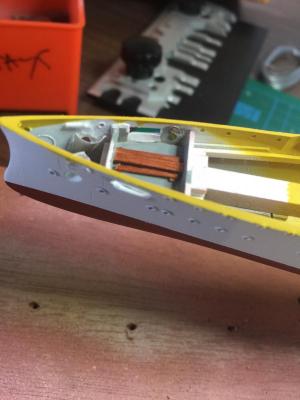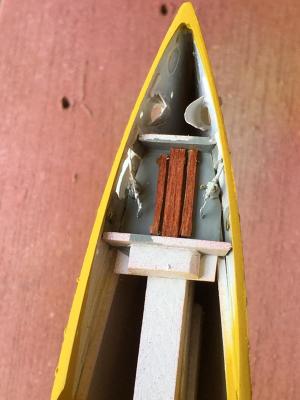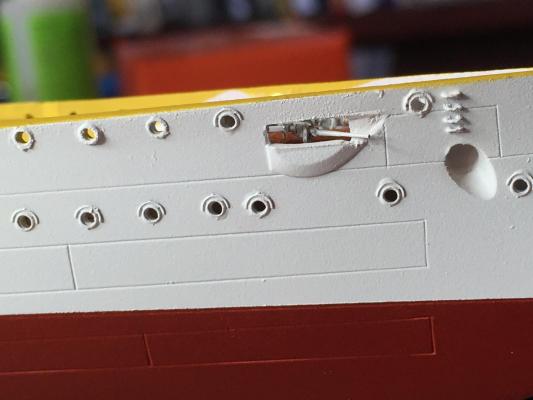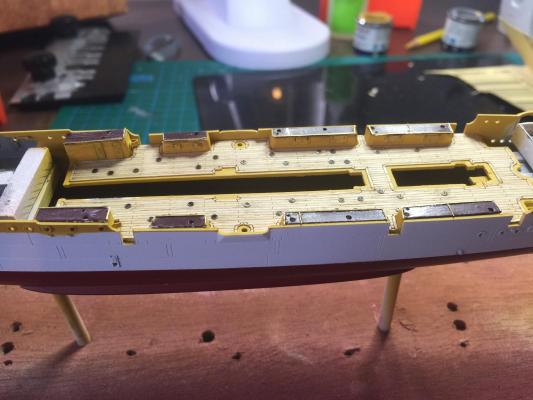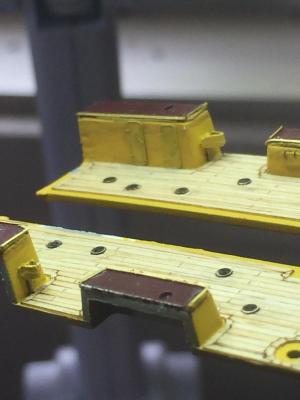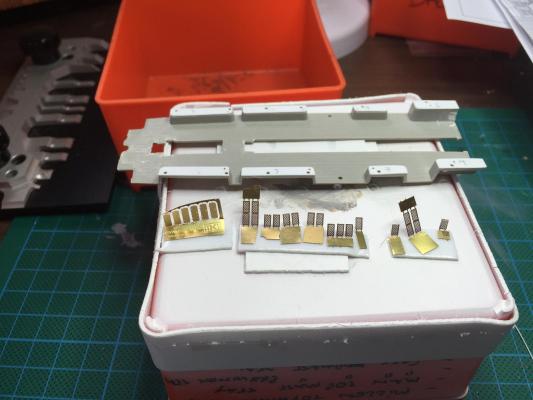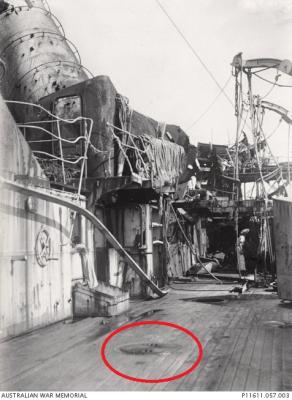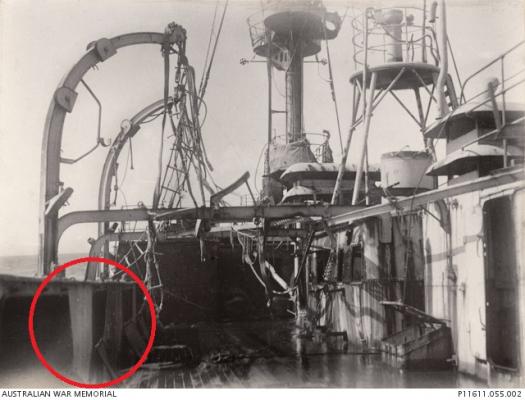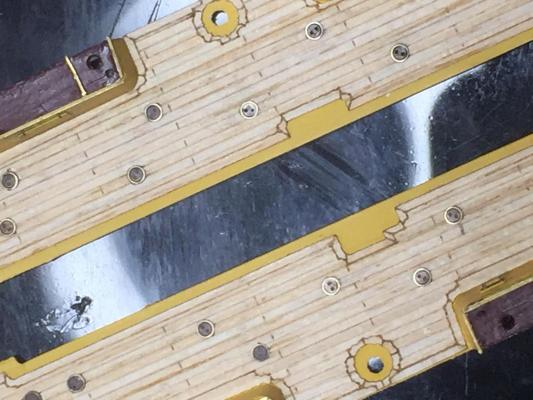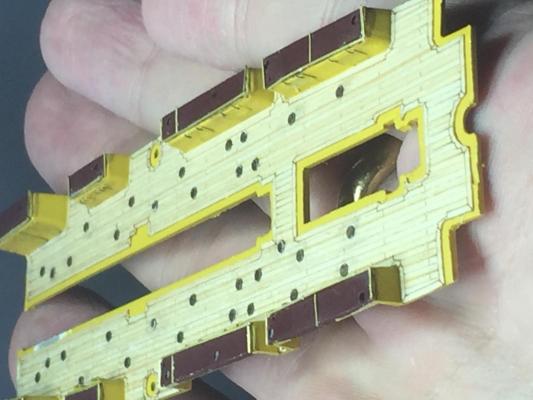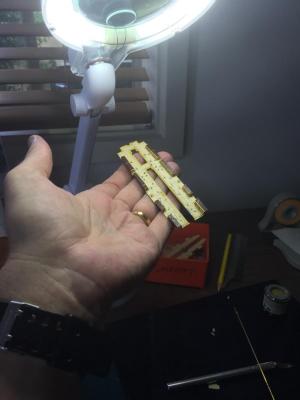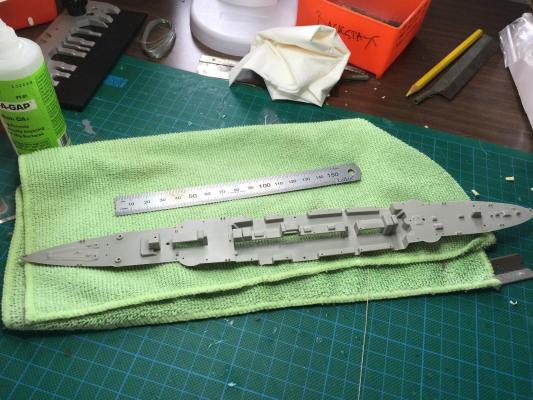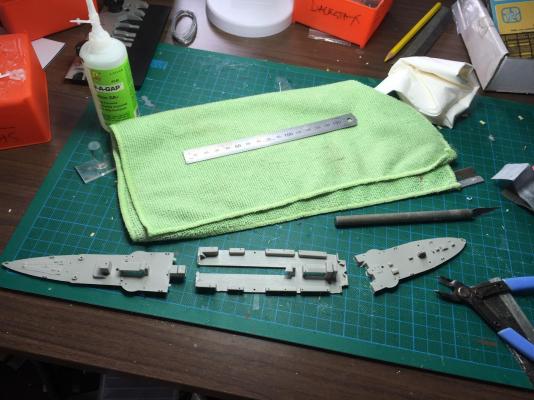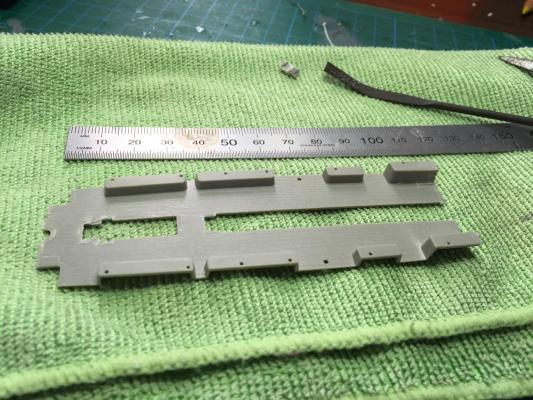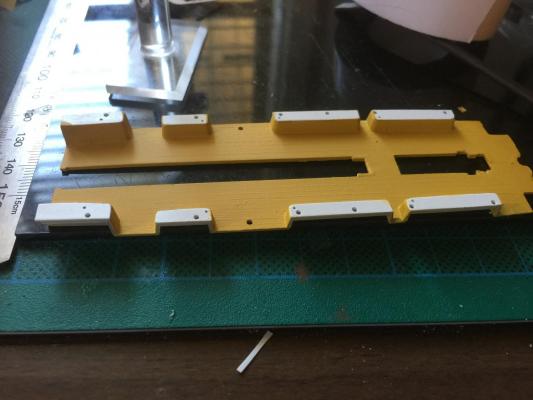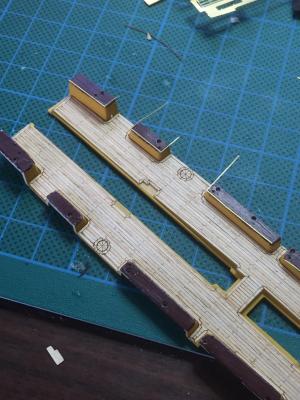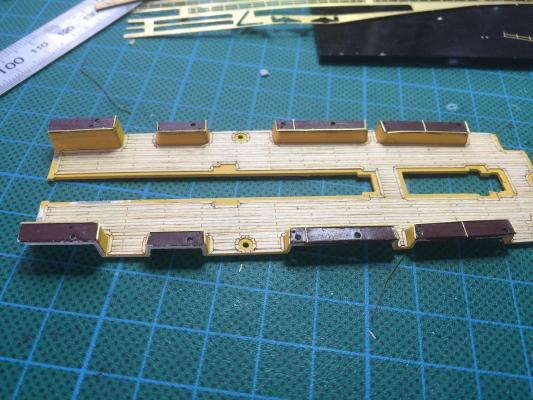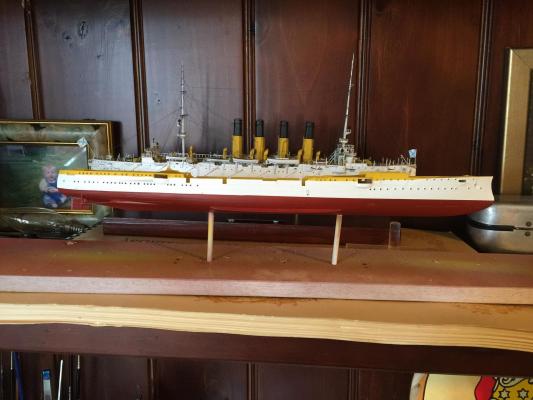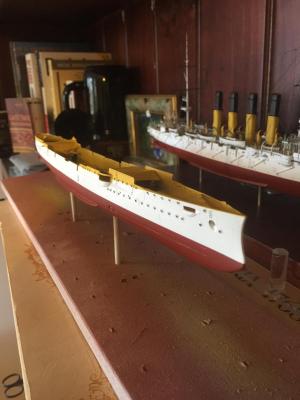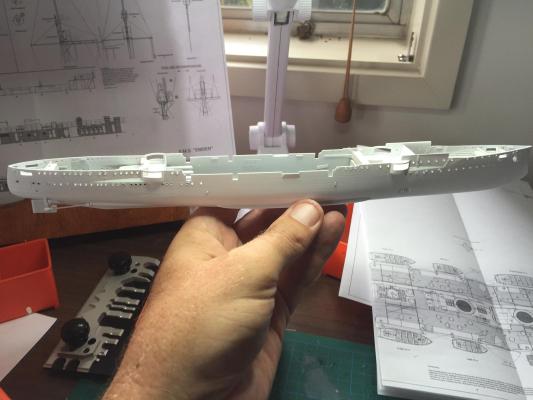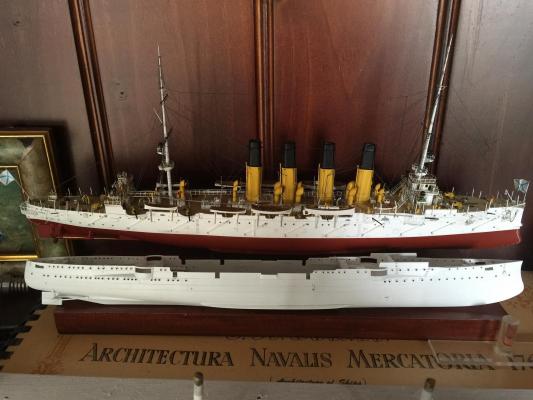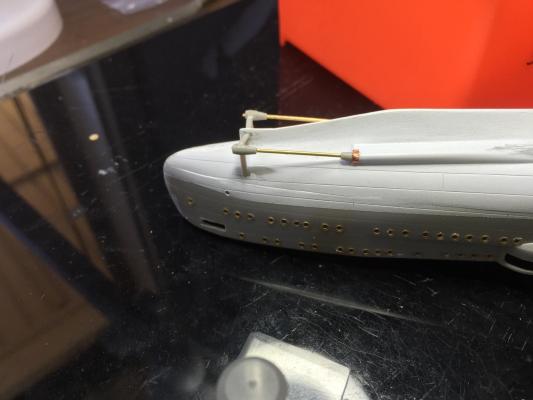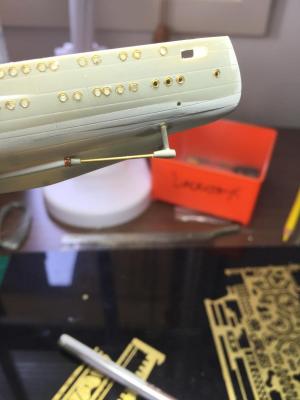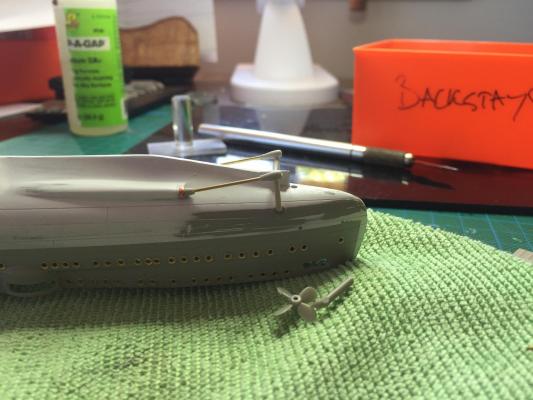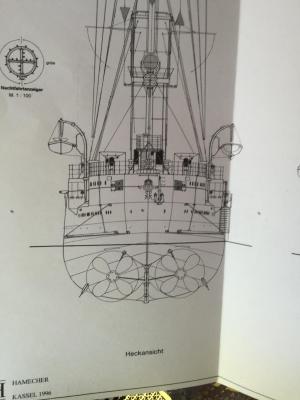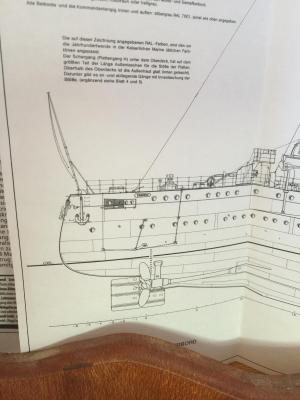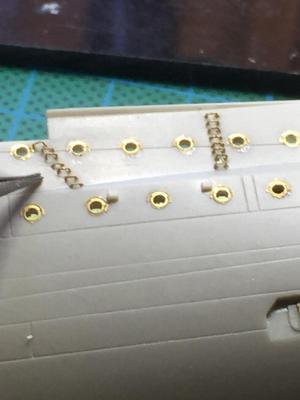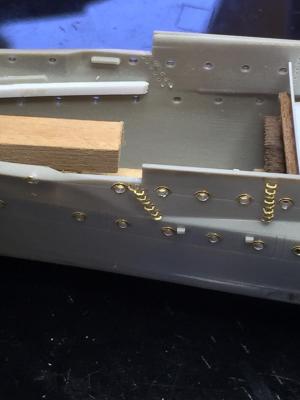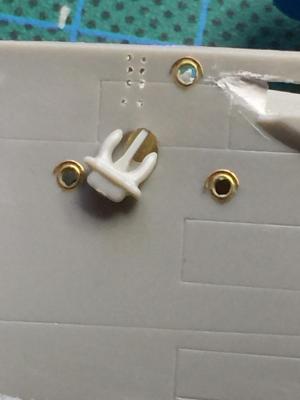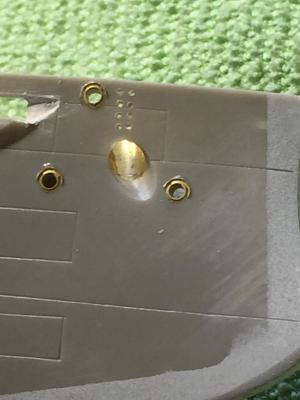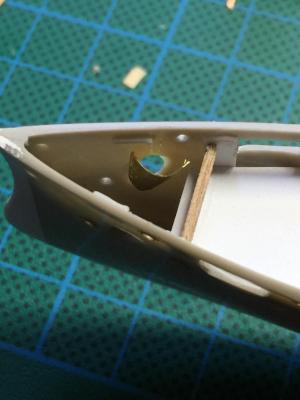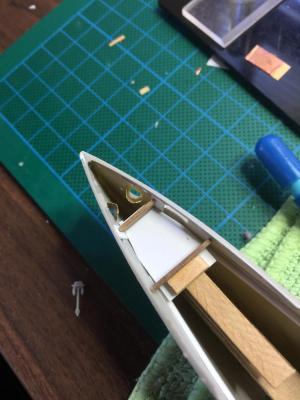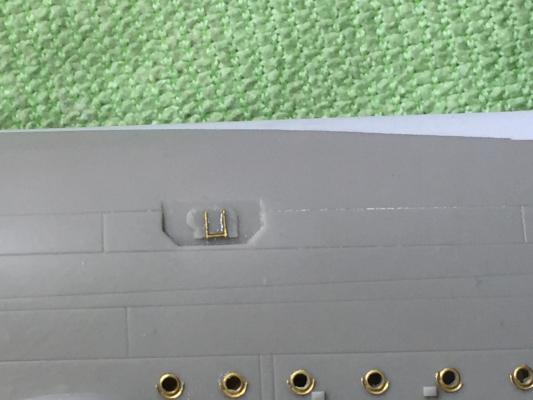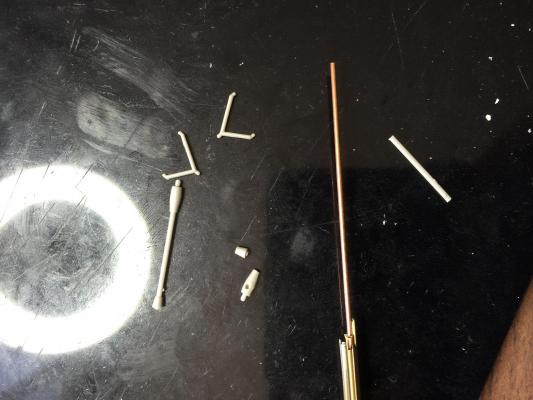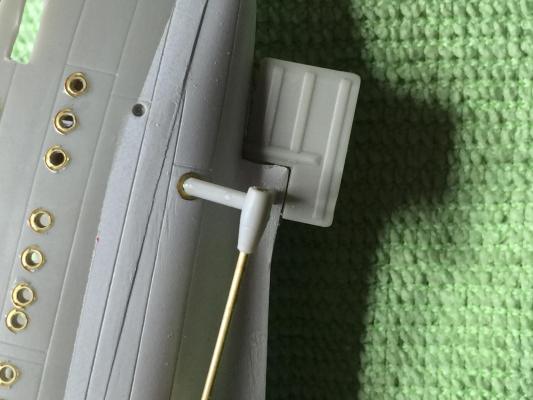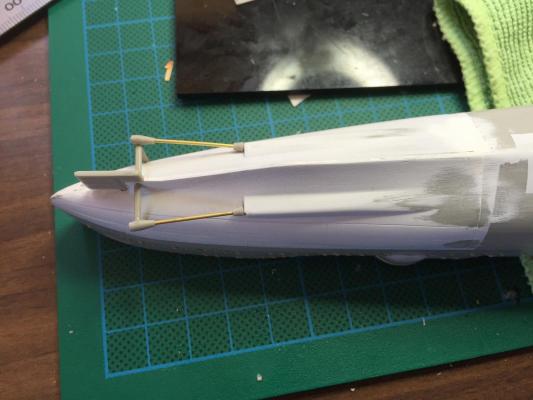-
Posts
5,482 -
Joined
-
Last visited
Content Type
Profiles
Forums
Gallery
Events
Everything posted by RGL
-
I have made separate areas for the guns under the decks. The guns themselves come up very nicely when painted. the first part is the bow, utalising a mess table between the guns, and a few interior brass porthole covers. None of this will really be visible once the roof goes on.
-
Lovely build, it's a great feeling of satisfaction getting to this point. All I can say is beware the belaying!
-
The side storage has hatches provided by Eduard which are lovely grates but just not accurate.This is the photo on the orange box. The coaling scuttles are very nice though and were blackened then sanded to provide detail. The kit nor Artwox mention them. The B/W photos are from the Australian War Memorial website and show the scuttles and the side hatches. I replaced the hatches with other spares, a little too big but they will almost be invisible after the kit is complete. As you can see from my hand size they are pretty small. I am in the process of making sinks which sit outside the toilets which are the first main door you can see forward.
-
I have started on the deck. Given it is one continuous piece, it is far easier to cut it to bite size pieces. That way I can do the interior detail and amidships before starting on any of the housing. Firstly snipping it in three and filing it back. The adding a layer on top of the side storage which on the real ship was vinyl held down my 5cm brass strips. I have used cut off photo etch railing to represent this. The deck is from Artwox.
-
Don't forget they don't have to work! Once lashed up you will not notice them. It's a lot of revision for something that's never going to move. Unless you own little people who are going to sail it, then I'd say they'll need revision.
- 517 replies
-
- Endeavour
- Artesania Latina
-
(and 1 more)
Tagged with:
-
The hull is pretty much painted, just a few little touch ups to go. The Tamiya mask worked very well. Huff's plans state that the pre WW1 ships had no boot straps and I can find no reference to them apart from the Revell painting guide. It is somewhat of a relief. I am missing, however, a red pin stripe at the yellow and white border which was apparently 5cm and I have no idea how to paint a strip which is essentially 1mm thick. Open to suggestions or if anyone makes decals that thin in red stripe. Next is the interior detail for the below deck guns.
-
I'm away at the moment but if you have a look at my photo on 14 September 2014 (the phone does not show the post number) it shows it.
-
I think Danny commented on mine, I think the bumpkin stays would probably be released when working the anchors. In my final photos, (and on my finished model), I have one sides anchor being drawn in with the fish hook tackle and have one stay hanging loose to allow the hawser the run properly. Otherwise I imagine they would be attached so the tackle attached to their ends could be braced properly.
-
First primer coat. There are a few things I want to fix up that are visible to me, like a tiny gap in the bilge keel, which I may remedy by running some CA along the gap to fill it. This kit is a little bit smaller than the Varyag and requires a lot more bashing.
-
I love the bumpkins mate, just check the clearance on the bowsprit. And keep them away from cats.
-
Wow, retirement, only 14 years to go! Well done.
- 517 replies
-
- Endeavour
- Artesania Latina
-
(and 1 more)
Tagged with:
-
Now, a bit more cut and paste and I'm finally happy. Slog certainly save me a lot of recovery work, that's what happens when you're working upside down.
-
Not NYD this or next year! as I posted above, I removed the shafts and reversed them. Nup, angle all sorts of wrong again when compared to the plans.
-
David, there are only 2 in the kit, so if I stuff it I'm stuffed. I used the brackets from the Dresden kit and a 1 mm shim which will not be visible on the finished product. The shafts are now appearing to run true and the props run clear of the hull.
-
Slog's right, the angle is wrong. I cut them off and reversed them. Still wrong! The placement of the braces on the kit does not align with the plans as the start of the prop itself needs to align with the rudder post. More cutting and sanding required. The props are about 2mm out (too big) which is a lot at this scale and would hit the hull. The Dresden props are much smaller and of no use to me (there were 4 of them). I shall post some photos when I can get the computer from my 10 year old who is currently battling the forces of evil. I had hoped to get the primer coat on today!!
-
The final part of the hull before priming are the hull steps. These are about 1mm each, I drilled all the way through the hull, place the set then put superglue behind them from the interior of the hull to set them and fill any gaps.
-
Next step is the Anchor or hawser holes. Your can see strait through to the other side. as you can see from the tiny anchor its going to look a bit silly so using a bit of off cut etch and a mandrel I shaped some inner tubes.
-
A one off is the torpedo tubes below the hull. Just a tint bit of etch to represent the hinges matches the plans.
-
Next are the shafts. I will put the props on last. I had to utalise some of the kit and drilled out the plastic shaft replacing it with brass rod. i hope this makes them more sturdy.
About us
Modelshipworld - Advancing Ship Modeling through Research
SSL Secured
Your security is important for us so this Website is SSL-Secured
NRG Mailing Address
Nautical Research Guild
237 South Lincoln Street
Westmont IL, 60559-1917
Model Ship World ® and the MSW logo are Registered Trademarks, and belong to the Nautical Research Guild (United States Patent and Trademark Office: No. 6,929,264 & No. 6,929,274, registered Dec. 20, 2022)
Helpful Links
About the NRG
If you enjoy building ship models that are historically accurate as well as beautiful, then The Nautical Research Guild (NRG) is just right for you.
The Guild is a non-profit educational organization whose mission is to “Advance Ship Modeling Through Research”. We provide support to our members in their efforts to raise the quality of their model ships.
The Nautical Research Guild has published our world-renowned quarterly magazine, The Nautical Research Journal, since 1955. The pages of the Journal are full of articles by accomplished ship modelers who show you how they create those exquisite details on their models, and by maritime historians who show you the correct details to build. The Journal is available in both print and digital editions. Go to the NRG web site (www.thenrg.org) to download a complimentary digital copy of the Journal. The NRG also publishes plan sets, books and compilations of back issues of the Journal and the former Ships in Scale and Model Ship Builder magazines.



